Fluid Ounce (fl oz) - Definition, Examples, Quiz, FAQ, Trivia
Learn about liquid volume measurement with easy explanations and practice activities
What is a Fluid Ounce?
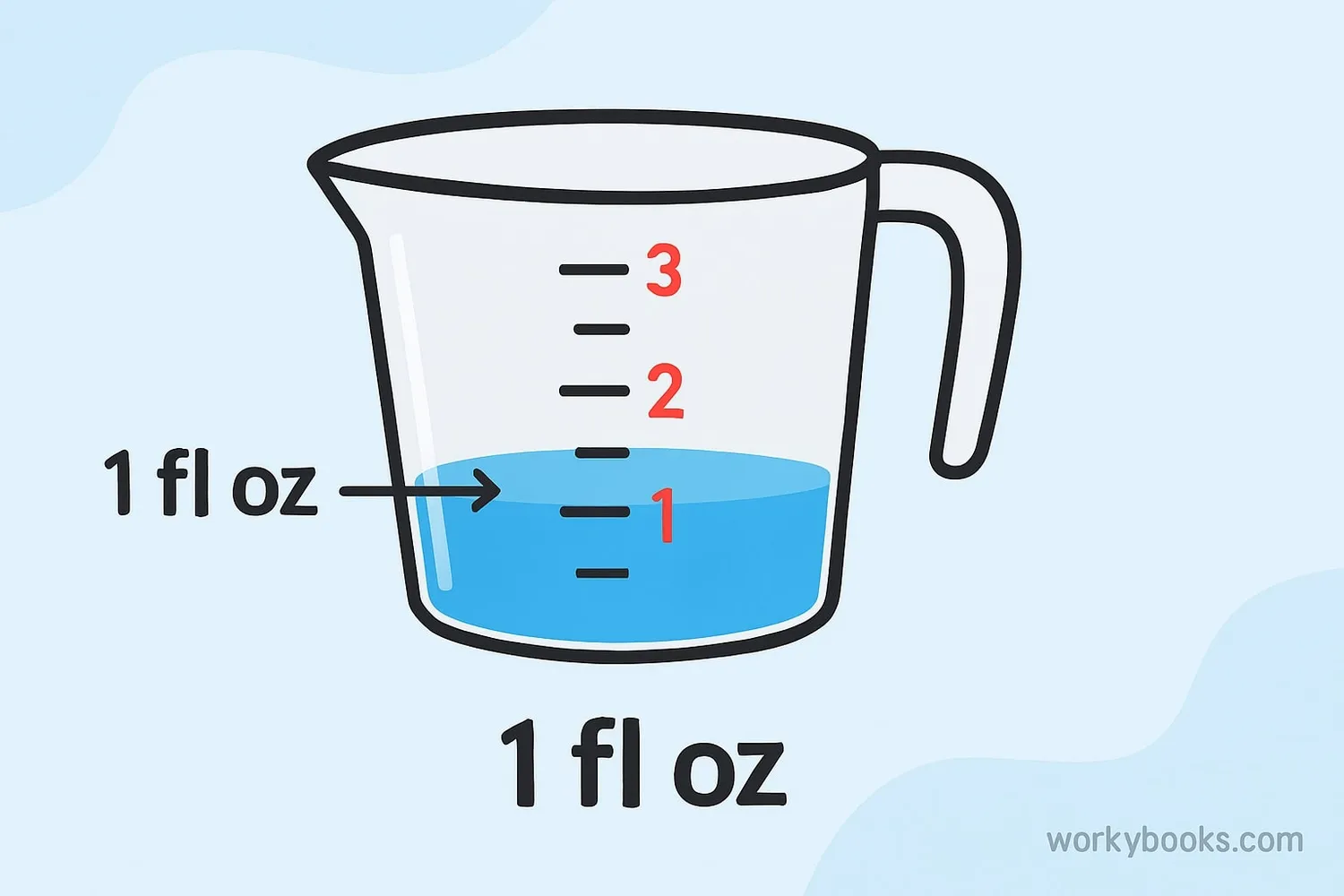
A fluid ounce is a unit used to measure liquid volume or capacity. It's different from an ounce that measures weight. The abbreviation for fluid ounce is fl oz.
Think of a fluid ounce as the amount of liquid that would fill a small medicine cup or about two tablespoons. It's a helpful measurement for smaller amounts of liquids like medicine, flavorings, or beverages.
Fluid ounces are part of both the US customary system and the Imperial system, though they are slightly different in each system. Understanding fluid ounces helps us measure liquids accurately for cooking, science experiments, and everyday tasks.
Key Concept
A fluid ounce measures volume (how much space a liquid takes up), while a regular ounce measures weight (how heavy something is).
How to Measure Fluid Ounces
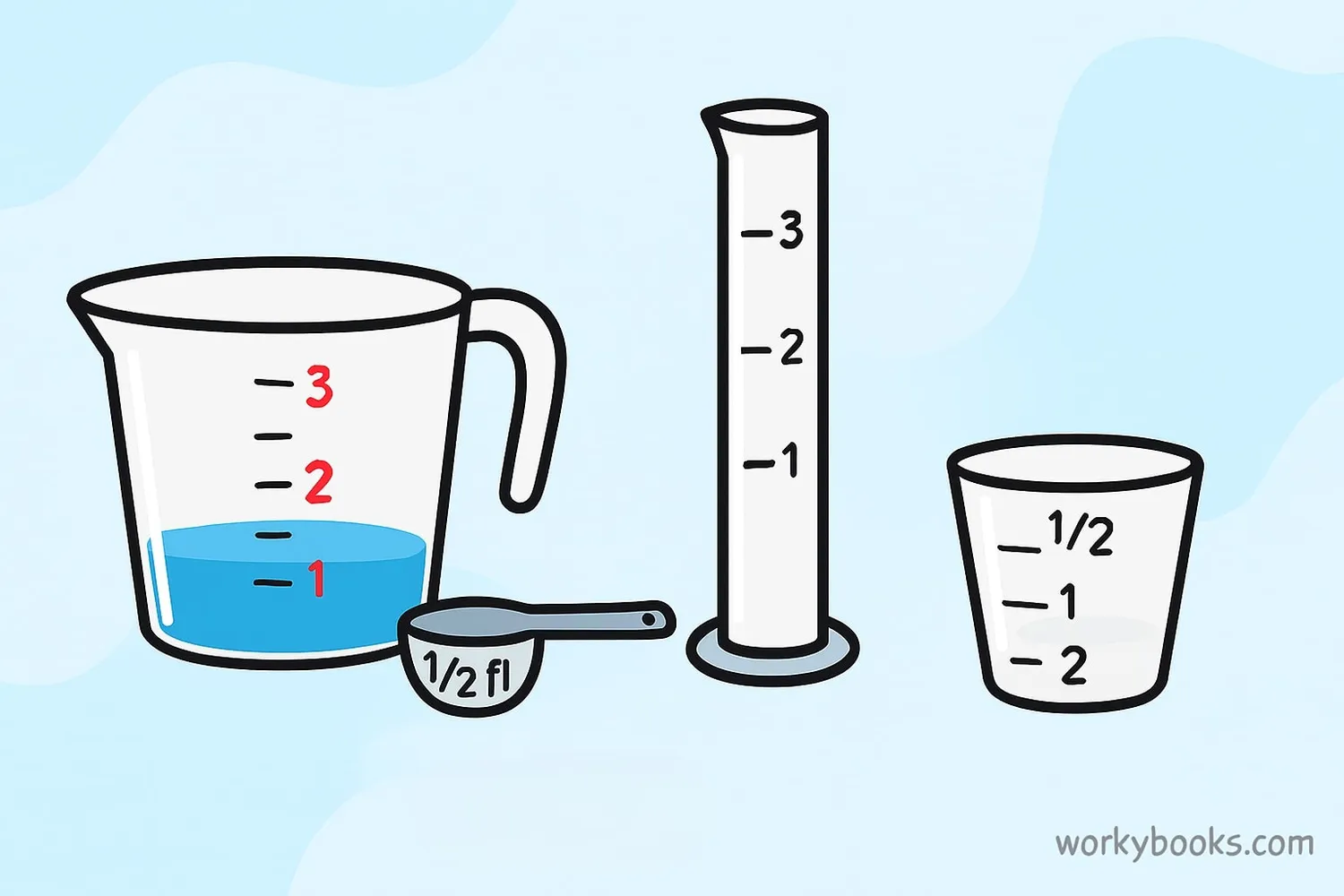
We use special tools to measure fluid ounces accurately. Here are the most common ones:
Measuring Cups: These usually have markings for cups, fluid ounces, and milliliters. To measure, pour liquid into the cup until it reaches the desired fluid ounce line.
Measuring Spoons: Tablespoons and teaspoons can help measure small amounts. Remember: 1 fluid ounce = 2 tablespoons.
Graduated Cylinders: These tall, narrow containers are used in science labs for precise measurements. They often have milliliter markings that can be converted to fluid ounces.
When measuring, always place the container on a flat surface and look at it at eye level to get the most accurate reading. The surface of the liquid will curve slightly (this is called the meniscus), and you should measure from the bottom of this curve.
Remember
When measuring liquids, always place your measuring tool on a flat surface and read it at eye level for accuracy.
Measurement Systems
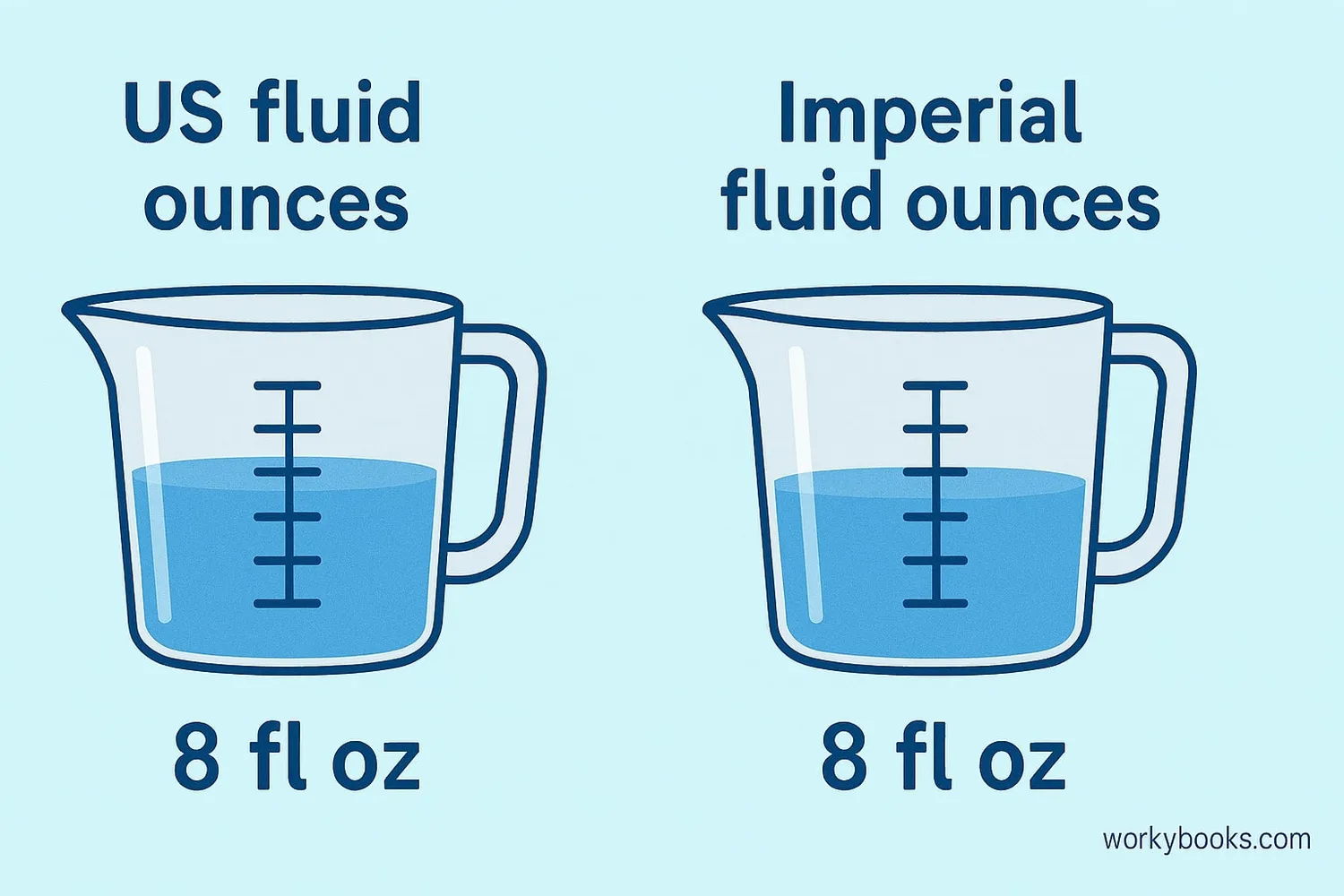
Fluid ounces are used in two main measurement systems:
US Customary System: Used primarily in the United States. In this system:
- 1 US fluid ounce = 1/16 of a US pint
- 1 US fluid ounce = 1/8 of a US cup
- 1 US fluid ounce ≈ 29.57 milliliters
Imperial System: Used in some countries like the United Kingdom. In this system:
- 1 Imperial fluid ounce = 1/20 of an Imperial pint
- 1 Imperial fluid ounce ≈ 28.41 milliliters
The Imperial fluid ounce is about 4% smaller than the US fluid ounce. This difference is important in recipes and scientific measurements where precision matters.
System Tip
Most recipes in the United States use US customary measurements, while recipes from the United Kingdom often use Imperial measurements.
Fluid Ounce Conversions
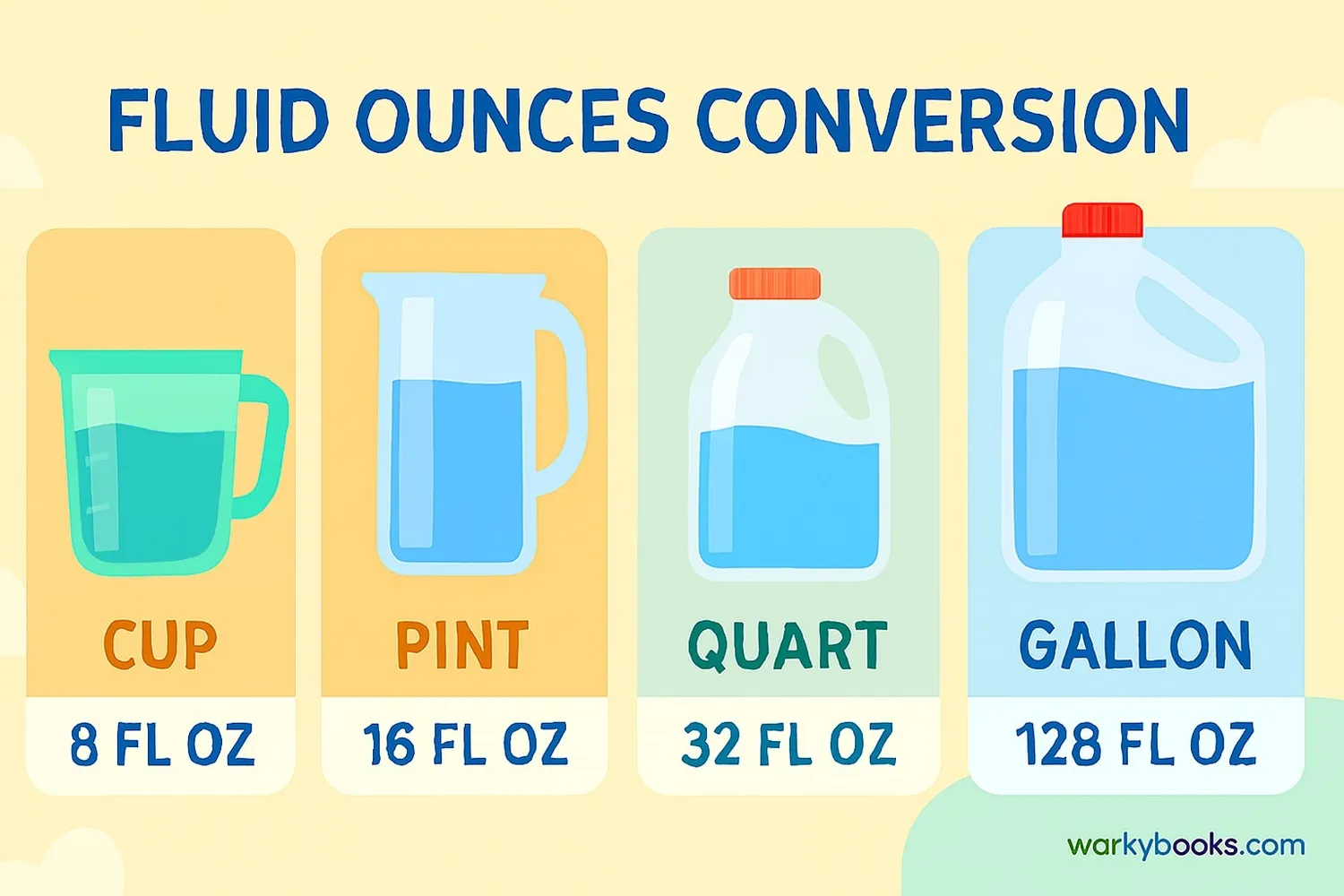
Converting between fluid ounces and other units helps us understand measurements better. Here are the most common conversions in the US customary system:
Conversion Formulas
US Customary Liquid Measurements
| Unit | Fluid Ounces (fl oz) | Milliliters (mL) |
|---|---|---|
| 1 teaspoon | 1/6 fl oz | ≈ 4.93 mL |
| 1 tablespoon | 1/2 fl oz | ≈ 14.79 mL |
| 1 cup | 8 fl oz | ≈ 236.59 mL |
| 1 pint | 16 fl oz | ≈ 473.18 mL |
| 1 quart | 32 fl oz | ≈ 946.35 mL |
| 1 gallon | 128 fl oz | ≈ 3785.41 mL |
Imperial Liquid Measurements
| Unit | Imperial Fluid Ounces | Milliliters (mL) |
|---|---|---|
| 1 teaspoon | 1/6 fl oz | ≈ 4.74 mL |
| 1 tablespoon | 1/2 fl oz | ≈ 14.21 mL |
| 1 cup | 10 fl oz | ≈ 284.13 mL |
| 1 pint | 20 fl oz | ≈ 568.26 mL |
| 1 quart | 40 fl oz | ≈ 1136.52 mL |
| 1 gallon | 160 fl oz | ≈ 4546.09 mL |
Conversion Tip
Remember that 1 US fluid ounce is approximately 30 milliliters. This rough conversion can help you estimate when precise measurements aren't critical.
Real-World Examples
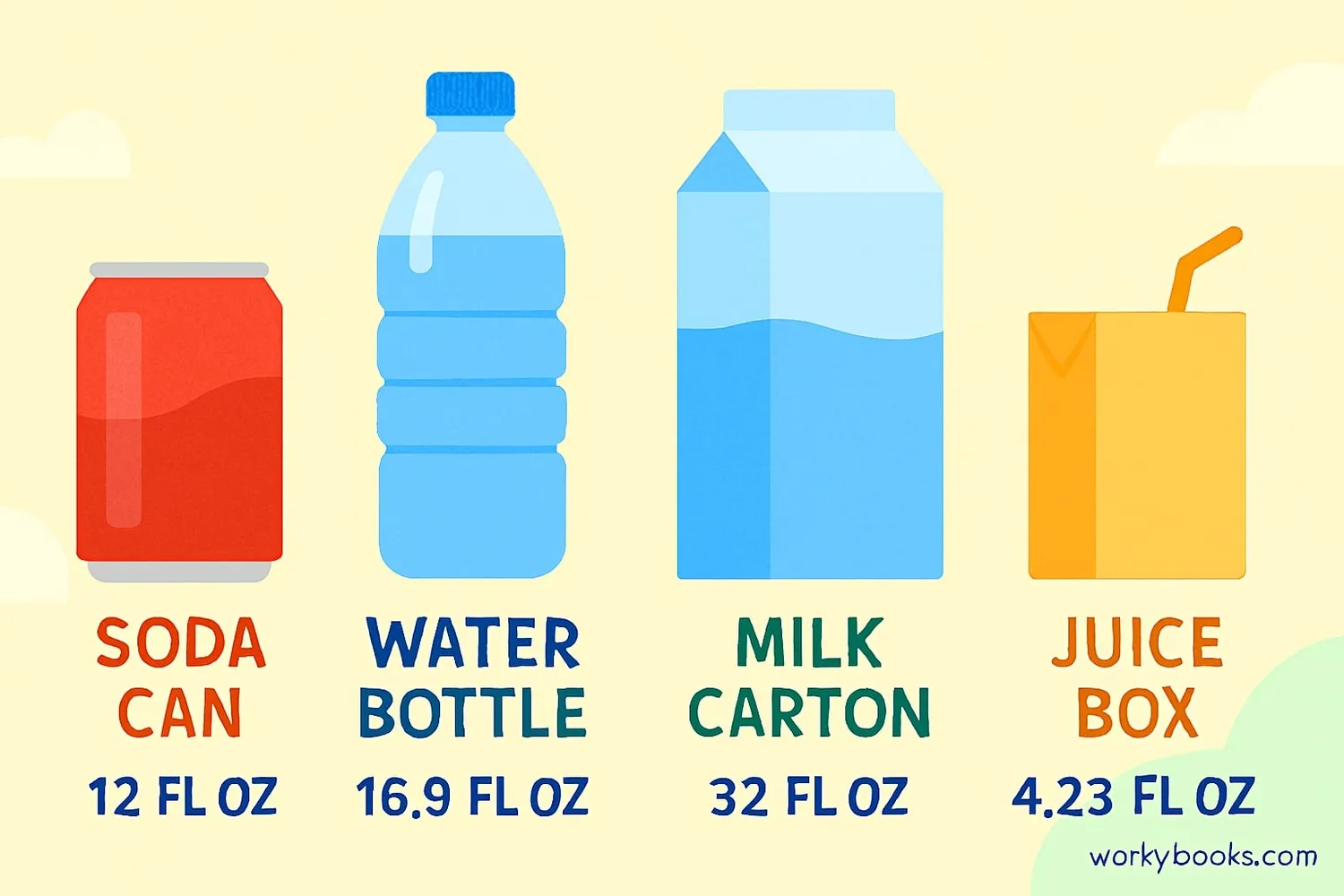
Let's look at some real-world examples of fluid ounce measurements:
Example 1: A standard soda can contains 12 fluid ounces of liquid. How many cups is this?
Solution: Since 1 cup = 8 fl oz, 12 ÷ 8 = 1.5 cups
Example 2: A water bottle typically holds 16.9 fluid ounces. How many milliliters is this?
Solution: 16.9 fl oz × 29.57 ≈ 500 mL (which makes sense as it's a common water bottle size)
Example 3: A recipe calls for 2 cups of milk. How many fluid ounces is this?
Solution: 2 cups × 8 fl oz per cup = 16 fl oz
Example 4: A medicine dosage is 2 teaspoons. How many fluid ounces is this?
Solution: Since 1 teaspoon = 1/6 fl oz, 2 teaspoons = 2/6 = 1/3 fl oz
Practice looking at containers in your home and converting their volumes between different units!
Practice Tip
Look at the labels on drink containers in your home to see how many fluid ounces they contain. This will help you become familiar with different measurements.
Fluid Ounce Practice Quiz
Test your knowledge with this 5-question quiz. Choose the correct answer for each question.
Frequently Asked Questions
Here are answers to common questions about fluid ounces:
Measurement Trivia
Discover interesting facts about fluid ounces and measurement:
Historical Origin
The fluid ounce was originally based on the volume occupied by one ounce of water. This is why at certain temperatures, 1 fluid ounce of water weighs approximately 1 ounce.
Density Matters
Because of differences in density, 1 fluid ounce of wine weighs slightly less than 1 fluid ounce of water. This is due to alcohol having lower density than water.
Standard Sizes
A standard shot glass in the United States holds 1.5 fluid ounces, while a standard coffee mug typically holds 8-12 fluid ounces. A can of soda is usually 12 fluid ounces.
Largest Measurement
The largest standard liquid measurement in the US customary system is the gallon, which contains 128 fluid ounces. Larger volumes are measured in multiple gallons.





